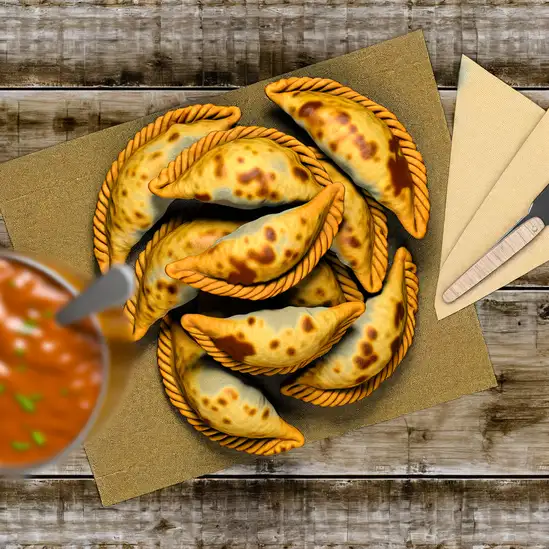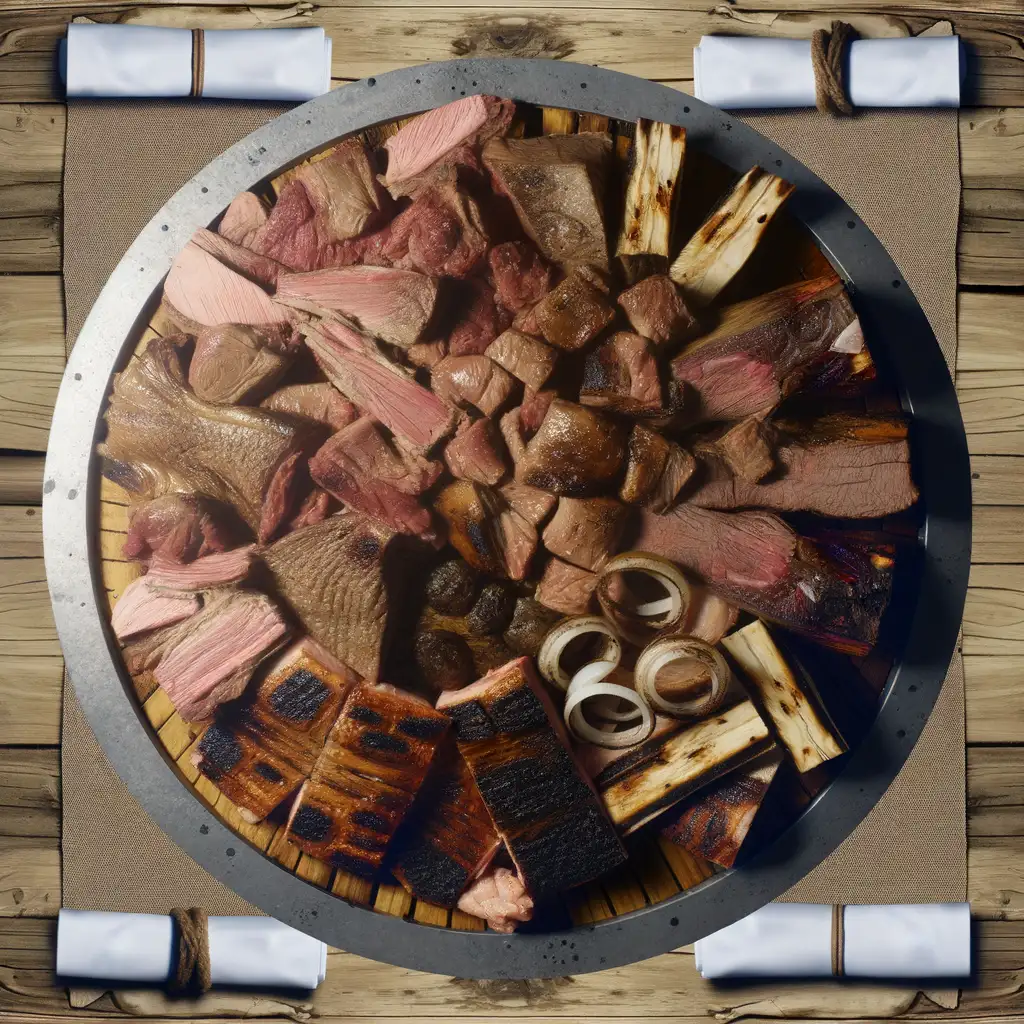



Imagine stepping into a place where time seems to slow down,and every cobblestone street whispers stories from centuries past—that’s Colonia del Sacramento. The moment you arrive,there’s this gentle,laid-back rhythm in the air,a blend of old-world charm and seaside calm that instantly puts you at ease. As you wander through the historic quarter,your eyes catch the sun casting golden hues on whitewashed walls,while the salty breeze from the Río de la Plata mingles with the faint aroma of freshly baked pastries from a nearby café. The city’s character is a beautiful patchwork of Portuguese and Spanish influences,visible in its colorful buildings and quaint plazas. You’ll hear the soft murmur of locals chatting in Spanish,the clinking of glasses as people savor a glass of Tannat wine,and the distant hum of boats bobbing gently in the harbor. There’s a warmth here—not just in the weather,but in the way people welcome you,eager to share stories or recommend their favorite spot for a slow,leisurely lunch. Don’t miss the chance to climb the old lighthouse for sweeping views that stretch across the water,or to lose yourself in the narrow alleys where timeworn doors and blooming bougainvillea create perfect little photo moments. And when evening falls,the city glows softly under lantern light,inviting you to linger over a plate of fresh seafood and a glass of local wine,soaking in the peaceful magic that makes Colonia feel like a place you’ll want to return to again and again.
The information on this page is currently being reviewed by Tripkliq and should be used as a guide only
Eng word: Hello
Eng pronunciation: OH-lah
Local language: Hola
Eng word: Goodbye
Eng pronunciation: ah-DYOS
Local language: Adiós
Eng word: Thank you
Eng pronunciation: GRAH-syahs
Local language: Gracias
Eng word: How much
Eng pronunciation: KWAN-toh KWEH-stah
Local language: ¿Cuánto cuesta?
Eng word: Toilet
Eng pronunciation: BAH-nyoh
Local language: Baño
Eng word: Help me
Eng pronunciation: ah-YOO-dah-meh
Local language: Ayúdame
Eng word: Yes
Eng pronunciation: SEE
Local language: Sí
Eng word: No
Eng pronunciation: NO
Local language: No
Eng word: Excuse me
Eng pronunciation: pehr-DOHN
Local language: Perdón
Colonia del Sacramento was founded in January 1680 by the Portuguese Manuel Lobo. It was established as a strategic point in the struggle for dominance over the Rio de la Plata region.
Due to its strategic position, Colonia del Sacramento was a focal point of disputes between the Spanish and Portuguese empires. Over the years, it changed hands several times before finally becoming part of Uruguay.
The historic quarter of Colonia del Sacramento was declared a UNESCO World Heritage Site in 1995, in recognition of its well-preserved urban landscape that offers a unique fusion of Portuguese, Spanish, and post-colonial styles.
Calle de los Suspiros, or the Street of Sighs, is one of the most famous and picturesque streets in Colonia del Sacramento. Its name evokes romance and mystery, and it is a must-visit for tourists.
The iconic Colonia del Sacramento Lighthouse, built on the ruins of the Convent of San Francisco, offers panoramic views of the city and the Rio de la Plata. It has been guiding ships since the mid-19th century.
The Basilica of the Holy Sacrament, dating back to the early 19th century, is an important religious and architectural landmark in Colonia del Sacramento. It stands on the site of the city's original church.
The city's Portuguese roots are evident in its cobblestone streets and historic buildings, blending with Spanish colonial architecture, to offer a tangible representation of the city's multicultural history.
Visitors to Colonia del Sacramento often note the presence of vintage cars lining its streets, adding to the city's charming and historic atmosphere. These cars have become one of the city's trademarks.
The city is home to several museums including the Portuguese Museum, which displays the city's Portuguese heritage, and the Municipal Museum, showcasing its history from the pre-Columbian era to the present.
In Colonia del Sacramento, the most common Power Adaptor is Type C, Type F, Type L.







Savory pastries filled with a variety of ingredients such as beef, chicken, or cheese, baked or fried until golden brown.

A traditional Uruguayan barbecue featuring various cuts of beef, often cooked on a grill or open fire, and served with chimichurri sauce.

A breaded and fried meat cutlet, usually made from beef or chicken, often served with mashed potatoes or salad.

A sweet caramel-like spread made from slowly heating sweetened milk, commonly used in desserts and pastries.

Italian-inspired dishes are popular in Colonia, with various types of pasta served with rich sauces, reflecting the city's cultural heritage.


A hearty sandwich made with thinly sliced beef, topped with cheese, bacon, lettuce, tomato, and often a fried egg, served in a bun.

A deep-fried dough pastry, often enjoyed as a snack or dessert, typically served with sugar or dulce de leche.
Imagine strolling along a sun-dappled Rambla,the salty breeze from the Río de la Plata mingling with the rich aroma of freshly brewed coffee and grilled meats wafting from nearby cafés. That’s Montevideo for you—a city that feels like a warm embrace,where the pace is unhurried but the energy hums quietly beneath the surface. It’s a place where old-world charm meets a laid-back coastal vibe,and every corner invites you to slow down and savor the moment.
Walking through Ciudad Vieja,the historic heart,you’ll hear the clatter of footsteps on cobblestones,the murmur of locals chatting over mate,and the occasional strum of a guitar from a street musician. The colorful murals and colonial architecture tell stories of a city proud of its roots yet open to creative expression. Montevideo’s markets burst with fresh produce,artisanal cheeses,and the unmistakable scent of asado grilling—Uruguay’s beloved barbecue that’s as much a social ritual as a meal.
What makes Montevideo truly special is its genuine warmth. People here have a relaxed friendliness that makes you feel like you belong,even if you’re just passing through. Whether you’re sipping a craft beer in a cozy bar or watching the sunset paint the sky over the coastline,there’s a comforting rhythm to life here that stays with you long after you leave. It’s not just a city to visit—it’s a place to experience,to breathe in,and to carry with you.
Buenos Aires feels like a city that’s alive in every sense — vibrant,passionate,and endlessly inviting. From the moment you step onto its bustling streets,you’re wrapped in a mix of old-world charm and modern energy. The air carries the scent of freshly baked medialunas mingling with the faint,smoky aroma of asado grilling nearby. You’ll hear the rhythmic clatter of tango dancers’ heels on cobblestones,blending with the lively chatter spilling out of cafés and the distant hum of street musicians playing soulful melodies.
Walking through neighborhoods like San Telmo or Palermo,you’ll notice the colorful murals that tell stories of the city’s rich history and rebellious spirit. The architecture is a fascinating patchwork — elegant French-style buildings stand shoulder to shoulder with vibrant street art and quirky boutiques. There’s a warmth in the way porteños (locals) greet each other,a genuine friendliness that makes you feel like you’re part of the city’s ongoing story.
And then there’s the food — oh,the food! Juicy,perfectly grilled steaks paired with Malbec that tastes like it was made just for you. Empanadas bursting with flavor,and dulce de leche desserts that melt in your mouth. Buenos Aires isn’t just a place to visit; it’s a place to savor,to dance,to lose yourself in the rhythm of life. Trust me,once you’ve wandered its streets and soaked in its spirit,you’ll carry a piece of Buenos Aires with you long after you leave.
Imagine stepping into a place where the ocean breeze carries a salty freshness that instantly relaxes you,and the sun seems to linger just a little longer on the horizon. That’s Punta del Este for you—a vibrant coastal town in Uruguay that feels both effortlessly chic and warmly inviting. Walking along its beaches,you’ll hear the rhythmic crash of waves mingling with the distant laughter of friends sharing a late afternoon mate,that traditional herbal tea that locals cherish. The city pulses with a laid-back energy,where stylish cafes spill onto sun-dappled sidewalks and colorful street art adds unexpected pops of creativity around every corner.
What really makes Punta del Este stand out is its blend of natural beauty and cosmopolitan flair. You can start your day watching fishermen haul in their catch at the harbor,then wander through bustling markets filled with fresh seafood and handmade crafts. As the sun dips,the scent of grilled octopus and smoky chimichurri drifts from open-air restaurants,inviting you to savor the rich flavors of Uruguayan cuisine. The city’s nightlife is lively but never overwhelming—think beachside bars with live music,where locals and travelers mingle under a canopy of stars.
Beyond the beaches and buzzing streets,there’s a genuine warmth in the people here. Punta del Este isn’t just a place to visit; it’s a place to feel alive,to slow down and soak in moments that stay with you long after you’ve left. If you’re craving a destination that balances natural charm with a spirited cultural pulse,this is where you’ll find it.
Located near Buenos Aires,Tigre is famous for its picturesque delta region,where visitors can explore islands,canals,and lush landscapes. It’s a perfect destination for nature lovers and those seeking a peaceful escape.
ExploreIf you’re craving a place where time slows down just enough to savor the little things,Carmelo in Uruguay is your kind of spot. The moment you arrive,there’s this gentle,laid-back rhythm in the air—like the town itself is breathing easy. You’ll find yourself wandering along tree-lined streets,the scent of fresh river breeze mingling with the earthy aroma of nearby vineyards. It’s a place where the sun casts a golden glow over the Río de la Plata,and the soft lapping of water against the docks feels like a quiet invitation to pause.
Carmelo’s charm lies in its blend of rustic and refined. The town wears its history with pride—colonial architecture stands shoulder to shoulder with cozy cafés where locals chat over strong coffee and homemade pastries. On weekends,the farmers’ market bursts with colors and flavors:ripe fruits,artisanal cheeses,and that unmistakable sweetness of freshly baked bread. You can almost taste the care in every bite.
What really makes Carmelo special is its warmth. People here are genuinely welcoming,eager to share stories about their vineyards or the best spots to watch the sunset. Whether you’re cycling through lush countryside or sipping a glass of tannat at a family-run winery,there’s a sense of connection—to the land,the culture,and the simple joys of life. Trust me,Carmelo isn’t just a place you visit; it’s a place you feel.
Rosario has this effortlessly vibrant energy that grabs you the moment you step onto its wide,tree-lined streets. It’s a city where the rhythm of daily life feels both relaxed and alive,like a slow dance with a lively beat underneath. Walking along the Paraná River,you’ll catch the scent of fresh bread from nearby bakeries mixing with the earthy aroma of the river,while locals jog,chat,and sip mate in the parks. The skyline,dotted with modern buildings and historic architecture,reflects a city proud of its roots but eager to embrace the future.
What really makes Rosario stand out is its deep connection to art and culture. Murals splash color across walls,telling stories of history and hope,while street musicians fill the air with tango,rock,and folk tunes. The city’s cafes invite you to linger over a cortado or a slice of medialuna,watching life unfold around you. And if you’re a foodie,Rosario’s culinary scene is a delightful surprise—imagine savoring perfectly grilled Argentine beef at a parrilla,paired with a glass of Malbec,all while the sun sets over the river.
There’s a warmth in the people here that’s impossible to miss. Whether you’re chatting with a vendor at the Mercado del Patio or joining locals in a lively plaza,you feel part of a community that’s proud,passionate,and welcoming. Rosario isn’t just a place to visit—it’s a place to feel alive,to soak in the stories,and to create your own.
Scammers may install skimming devices on ATMs to steal card information from unsuspecting tourists.
Tourists may be given counterfeit Uruguayan pesos or outdated bills when exchanging money at unofficial exchange points.
Unlicensed individuals may offer guided tours, providing little value or incorrect information while charging high fees.
Some taxi drivers may overcharge tourists by not using the meter or taking unnecessarily long routes.
Tourists in crowded areas or near popular attractions may be targeted by pickpockets who work in groups or use distraction techniques.
Certain restaurants may inflate bills or add hidden charges, especially if they sense the customer is unfamiliar with local pricing.
Vendors may sell fake or low-quality souvenirs at high prices, claiming they are authentic or handmade.
Uruguay has progressive drug laws compared to many other countries. The personal use and possession of cannabis are legal, and residents can grow a limited number of plants for personal use. However, tourists are not allowed to purchase cannabis legally. Possession of other drugs remains illegal and can result in severe penalties. It is important for tourists to respect local laws and avoid engaging in illegal drug activities.
In Colonia del Sacramento, as in the rest of Uruguay, smoking is prohibited in enclosed public spaces, including restaurants, bars, and public transportation. There are designated smoking areas in some places, but it is important to look for signs indicating where smoking is allowed. Smoking is also banned in certain outdoor areas, such as near schools and hospitals.
Vaping is subject to similar regulations as smoking in Uruguay. It is prohibited in enclosed public spaces and certain outdoor areas. Tourists should look for designated vaping areas and be mindful of local regulations to avoid fines.
What are other people saying about Colonia del Sacramento?
Recent Social posts about Colonia del Sacramento
There is nothing to show you for now.